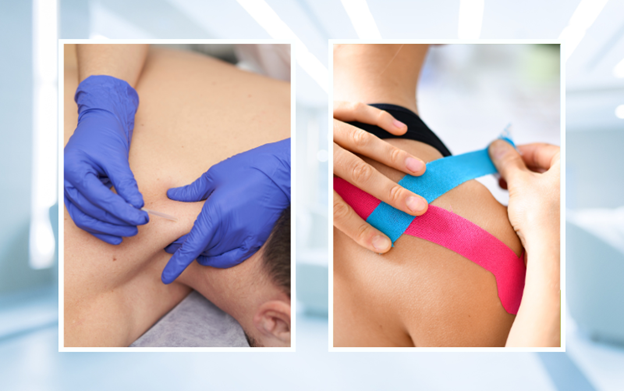For those passionate about sports in Singapore, keeping up with performance and managing injuries is essential. Two techniques that are increasingly used here are dry needling and sports taping. Each method provides distinct benefits, and when used together, they can significantly aid in recovery and performance. This guide will explore how combining these approaches can help you stay in top form for your next game or training session.
What is Dry Needling?
Dry needling is a treatment used to address muscular pain and enhance mobility. It involves inserting fine needles into specific trigger points within the muscles. These trigger points are tight knots or bands of muscle that can cause pain and discomfort. Dry needling aims to release these tight spots, helping to alleviate pain, improve blood circulation, and restore muscle function.
In Singapore, dry needling is gaining traction among athletes and fitness enthusiasts due to its ability to provide rapid relief from muscle pain and improve overall function. Practitioners use sterile needles to target precise points, making the procedure minimally invasive and generally well-tolerated.
What is Sports Taping?
Sports taping is a technique used to support and stabilise muscles and joints during physical activities. It involves applying adhesive tape to the skin in specific patterns to provide support and reduce the risk of injury. Sports taping can help prevent injuries, alleviate pain, and assist in recovery by supporting weakened or injured areas.
There are two main types of sports taping: rigid taping and kinesiology taping. Rigid taping offers strong support to injured or strained areas, while kinesiology taping is more flexible and allows for a greater range of motion, making it suitable for preventative and rehabilitative purposes.
Benefits of Combining Dry Needling and Sports Taping
Combining dry needling with sports taping can offer a well-rounded approach to injury prevention and recovery. Here’s how these methods work together to benefit sports enthusiasts:
- Enhanced Recovery: Dry needling helps to release muscle tension and improve circulation, while sports taping provides structural support. Together, they create an optimal environment for healing, allowing for faster recovery from injuries or strains.
- Improved Performance: Alleviating muscle pain and improving flexibility through dry needling, along with support from sports taping, can boost your overall performance. This combination ensures that your muscles are not only relieved of tension but also supported during physical activities.
- Pain Management: For those dealing with chronic muscle pain or recovering from an injury, dry needling can target pain directly. Sports taping can then offer ongoing support and relief, making it easier to manage discomfort and continue with your training.
- Injury Prevention: Regular dry needling can help maintain muscle health and prevent the development of tight spots that can lead to injuries. Sports taping can further reduce the risk by supporting vulnerable areas and preventing excessive strain during activities.
How to Incorporate These Techniques into Your Routine
- Consult a Professional: Before starting dry needling or sports taping, it’s important to consult with a qualified practitioner. They can assess your specific needs and determine the most suitable approach for your situation.
- Integrate with Your Training: Include dry needling sessions in your training schedule to address muscle tightness and pain. Use sports taping before and after workouts or competitions to provide support and enhance recovery.
- Monitor Your Progress: Keep track of how your body responds to these techniques. Regularly assess your performance, pain levels, and overall recovery to ensure that the combination is meeting your needs effectively.
- Stay Informed: Continue learning about both dry needling and sports taping. Understanding how these techniques work can help you make informed decisions about their use and maximise their benefits.
Conclusion
Combining dry needling and sports taping offers a practical approach for sports enthusiasts in Singapore looking to improve performance, manage pain, and support recovery. By incorporating these techniques into your routine, you can keep your body in good condition and stay focused on achieving your athletic goals.
For more information on dry needling and sports taping, or to schedule a consultation, visit The Movement Laboratory. Our team is here to help you optimise your training and recovery process.











